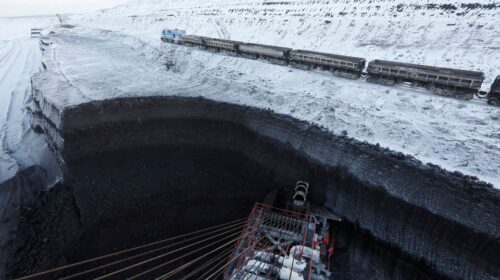Russian coal merchants are proving to be the winners as European buyers, nervous a feared Russian invasion of Ukraine could lead to disrupted gas supplies, stock up on the dirtiest fossil fuel.
Despite Europe’s ambitions to reduce carbon emissions to net zero by the middle of the century, which means weaning itself off all fossil fuels, but especially coal, the continent has been switching to coal from gas since the middle of last year.
Even before the current risk invasion and possible Western sanctions on Russia could choke off gas from Europe’s biggest gas supplier, fuel buyers responded to record high gas prices.
The European Union’s coal imports rose by 55.8% in January versus a year ago, to 10.8 million tonnes – of which Russia supplied 43.2% – analysis from shipbroker Braemar ACM, based on ship tracking data, found.
EU coal imports also rose in December 2021 by 35.1% year-on-year to 9.3 million tonnes.
For 2021 as a whole, imports of Russian thermal coal into Europe, of which the majority is shipped to Germany, Belgium and the Netherlands, rose to 31.1 million tonnes, a year-on-year increase of 16.2%, Braemar analysis showed.
European politicians say Russia has helped to cause the record gas prices by witholding supplies, a charge Russia denies.
Russia has said it is meeting contractual agreements to European customers and that prices would fall if Germany gave approval to the Gazprom-backed Nord Stream 2 pipeline because that would increase shipments of Russian gas to Europe. read more
Meanwhile, the high gas prices are expected to continue to lead to high coal demand.
The International Energy Agency said this week that European gas demand is expected to decline by 4.5% this year as coal is cheaper for power generation.
Coal supplies are also constrained and rising in price, which at some point would be expected to cap European buying.
The European physical thermal coal March price gained 78% in January, while physical Australia Newcastle price for March rose by 71% last month.
“Supply constraints in other key suppliers … namely Colombia and the United States, have contributed to an already tight coal market,” Braemar dry bulk analyst Mark Nugent said.
In the world, Indonesia is the world’s biggest shipper of thermal coal, followed by Australia.
Indonesia imposed a month-long ban on exports on Jan. 1 to boost low inventories at local power firms and avert outages.
Although the ban expired on Jan. 31, potentially easing tightness on the market, only the Indonesian coal miners compliant with new regulations on domestic market sales have been cleared to restart shipments.
The world’s biggest coal consumer China gets roughly 90% of its supplies from domestic mines, shielding it from international market dynamics.
Even there, however, traders are nervous the tightness of the global market leaves little scope to absorb any unexpected disruption in China, which relies on coal for over 60% of its power.
Most European countries have greatly reduced their reliance on coal, but they have kept coal-fired generation for back-up, and have have been firing it up, provided they can get the fuel.
“This is likely to ease a little when the European summer comes,” said Matt Boyle, manager at S&P Global Platts. “In the meantime, it might be difficult for utilities to scramble to get more coal if conflict occurs, even if they wanted to.”





